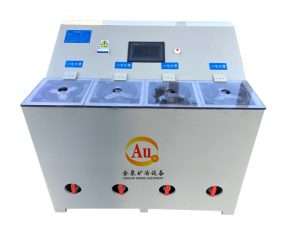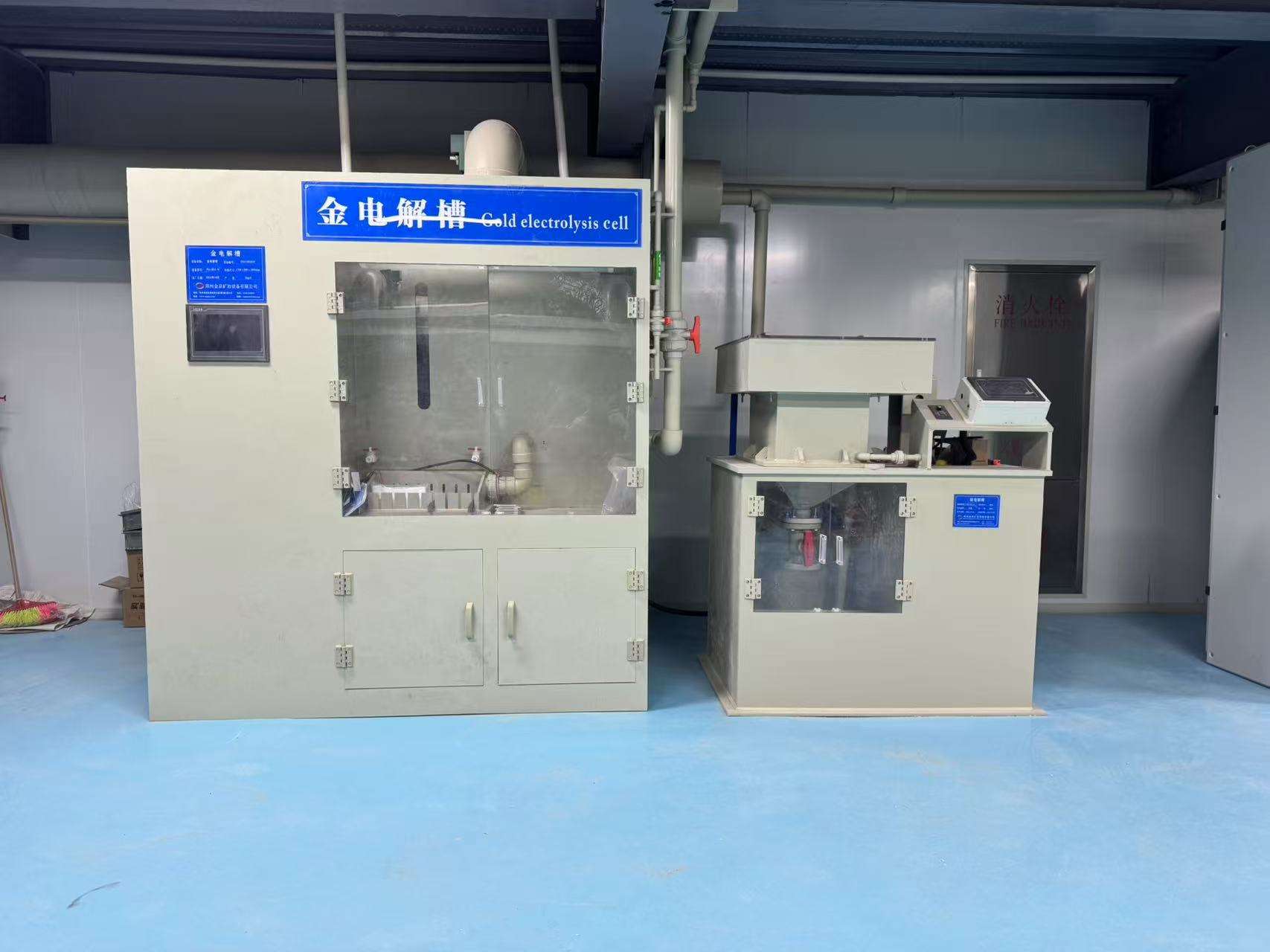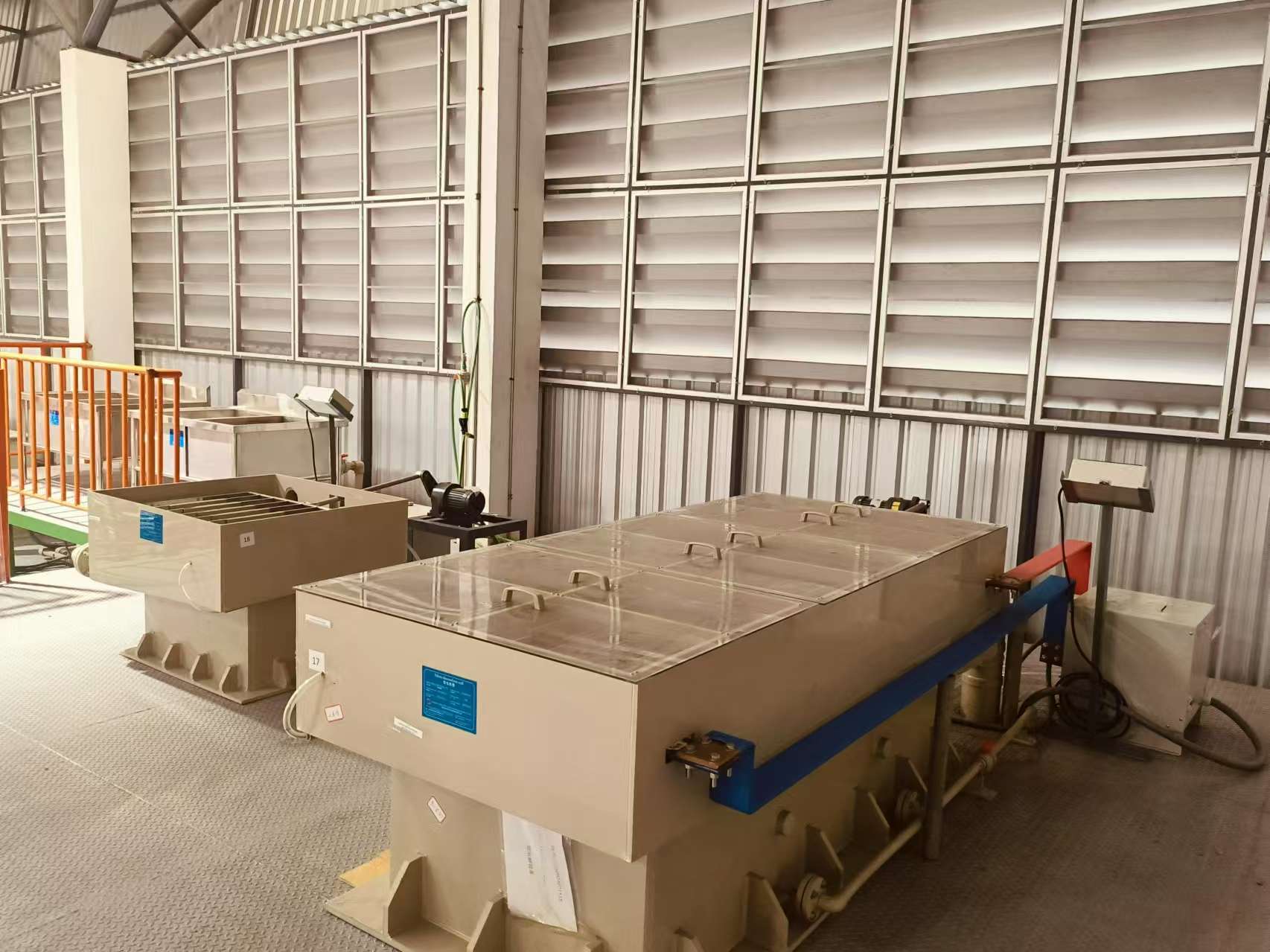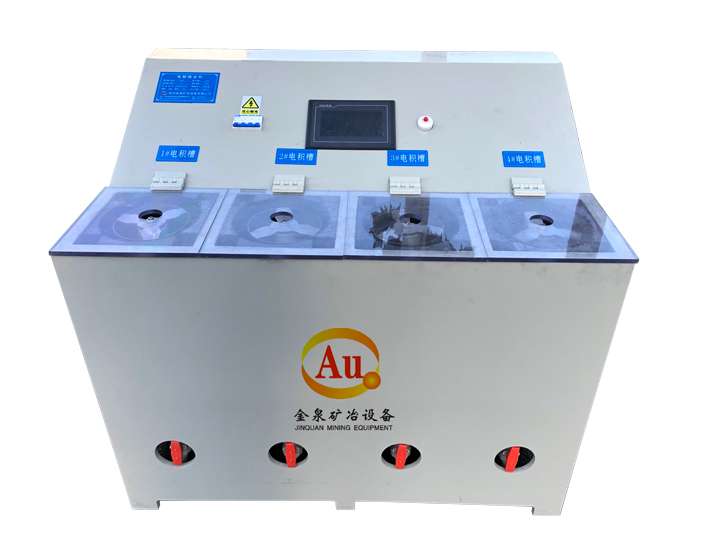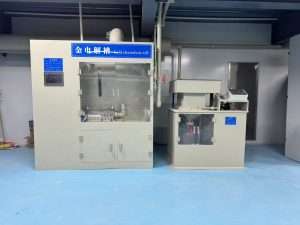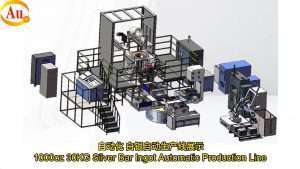Principle of metal electrolysis
The basic principle of electrolysis (anode dissolution, cathode deposition),
electrolyte composition, purity control, and recovery efficiency.
Electrolysis is the process of using electric current to drive non-spontaneous
chemical reactions. In gold and silver electrolysis, the anode is usually an alloy or
crude metal containing gold and silver, and the cathode is a pure metal flake.The
electrolyte must effectively dissolve metal ions, typically using solutions such as
silver nitrate or potassium gold cyanide. During this electrochemical process, as
electrical current flows through the system, the anode metal undergoes dissolution
while the liberated ions migrate to and deposit onto the cathode, thereby achieving
metal purification.
Take gold and silver electrolysis as an example: Gold and silver electrolysis
technology achieves efficient purification of precious metals through electrochemical
redox reactions: the anode is a crude metal containing gold and silver (such as an
alloy or scrap) that dissolves under the action of electric current
(Ag→Ag⁺+e⁻, Au→Au³⁺+3e⁻),
and the metal ions migrate to the cathode and are reduced and deposited as high-purity
metals (Ag⁺+e⁻→Ag, Au³⁺+3e⁻→Au).
Metal electrolysis equipment can be flexibly expanded according to production needs,
with high purity, low loss and high metal recovery rate. The electrolysis equipment can be
modularly designed and is suitable for precious metal refineries, small to large gold refining
companies and laboratory applications.Principle of metal electrolysis vido
Call us now:
